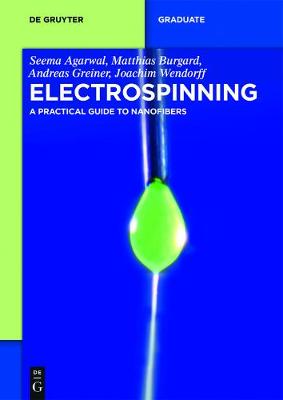De Gruyter Textbook
2 total works
Smart polymers are high-performance materials that change as a response to the environment. They show sharp, predictive, and large change in properties upon small changes in the external environment like temperature, pH, light, radiation, enzymes, bacteria, virus, etc. They impact in biomedicine, in optical applications, and in mechanical devices for artificial muscles, self propelled movement, self-healing and shape-memory systems.
Electrospinning
by Seema Agarwal, Matthias Burgard, Andreas Greiner, and Joachim H Wendorff
Published 1 January 2012
Focuses on basic aspects of nano/microfibers made by electrospinning with details on spinning recipes, characterization techniques and chemistry of the polymers in use. The basic understanding provided in the book, is useful for producing 1D and 3D fibrous structures with specific properties for applications, e.g. textiles, membranes, reinforcements, catalysis, filters or biomedical uses. Students and practitioners will find great value in the step by step instructions how to manufacture nanofibers.
- Electrospinning equipment
- History of electrospinning and nanofibers -characterization-fundamentals of electrospun fibers
- Ready-made recipes for spinning solutions
- Conditions for the productions of highly diverse fiber morphologies and arrangements
- Chemistry of fiber forming materials
- Electrospinning equipment
- History of electrospinning and nanofibers -characterization-fundamentals of electrospun fibers
- Ready-made recipes for spinning solutions
- Conditions for the productions of highly diverse fiber morphologies and arrangements
- Chemistry of fiber forming materials

